8 Cleaning Products You Should Never Mix Together, An Expert Explains
These cleaning ingredient duos are best avoided
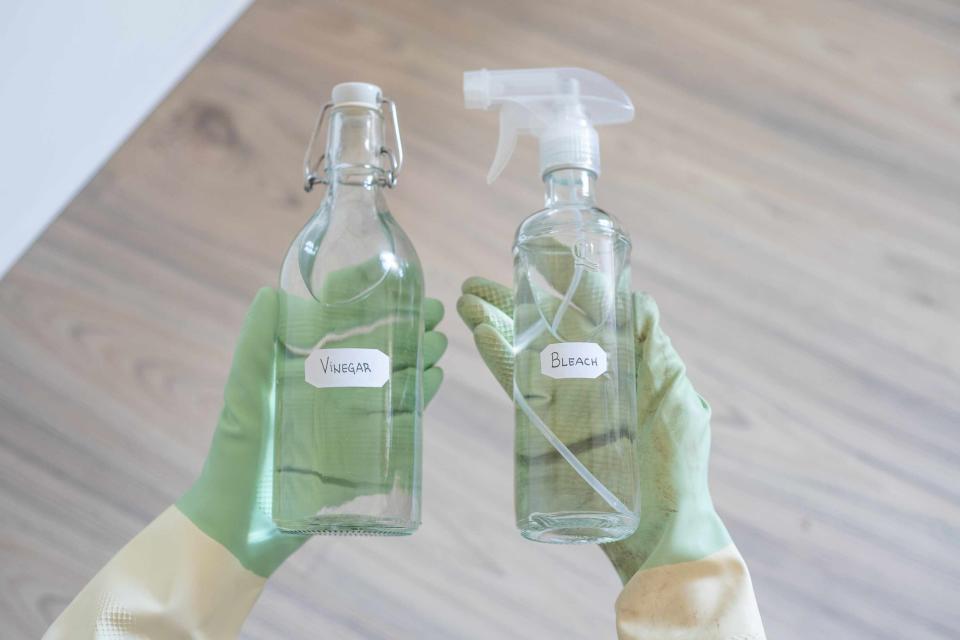
The Spruce / Sanja Kostic
Reviewed by Brandon Pleshek
Whether you’re making your own DIY cleaning solution or simply trying to power through your cleaning, it’s important to know your way around your cleaning chemical cabinet.
“Any time you are working with cleaning products, you must keep in mind that they are chemicals,” says Michael Silva-Nash, VP of Operations of Molly Maid, a Neighborly company.
Though chemicals should always be approached with caution, particularly when it comes to combining them with other varieties, we’re focusing on combinations that should be avoided completely, whether the mixture creates harmful chemical gases to cleaning agents that simply cancel each other out.
To help inform this no-fly list of cleaning couples, we enlisted the help of experts to share which cleaning products should never be combined.
Meet the Expert
Michael Silva-Nash is the VP of Operations of Molly Maid, a Neighborly company.
Mallory Micetich is a home expert at Angi.
Mary Gagliardi, better known as Dr. Laundry, is Clorox’s in-house scientist and cleaning expert.
Bleach with Most Other Cleaning Products
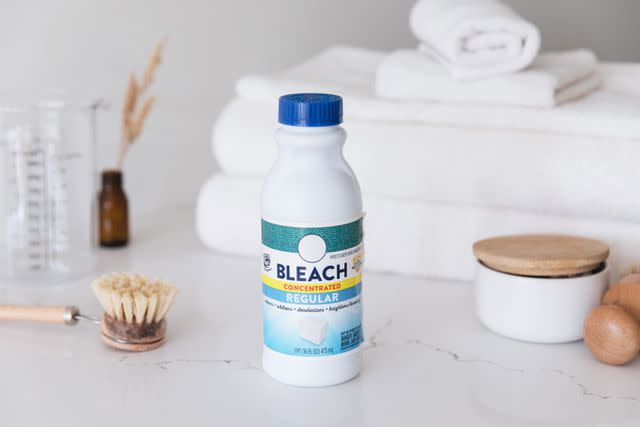
The Spruce / Letícia Almeida
We’re leading our list with a single cleaning product that you should always use with caution when mixing with other cleaning products: bleach. You’ll see it mentioned on this list quite a few times, as it can create certain fumes and compounds that are harmful.
“As a rule, you should always be careful when cleaning with bleach,” Micetich says. “You shouldn’t mix anything with bleach unless you’re 100% positive that it’s safe.”
Bleach with Rubbing Alcohol
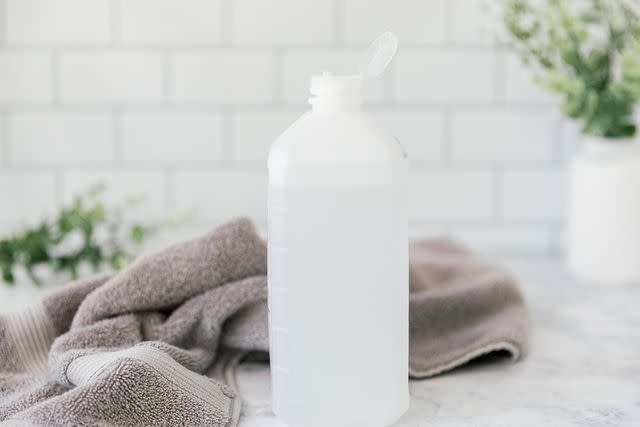
The Spruce / Ana Cadena
Avoid mixing rubbing alcohol and bleach as the two will result in chloroform, says Silva-Nash. Even if you aren’t using bleach with another cleaning agent, Gagliardi always recommends following the label’s directions for contact times and proper dilution.
“This ensures that products are safe for the surfaces they are applied to and for the person doing the cleaning," she says.
Bleach with Vinegar
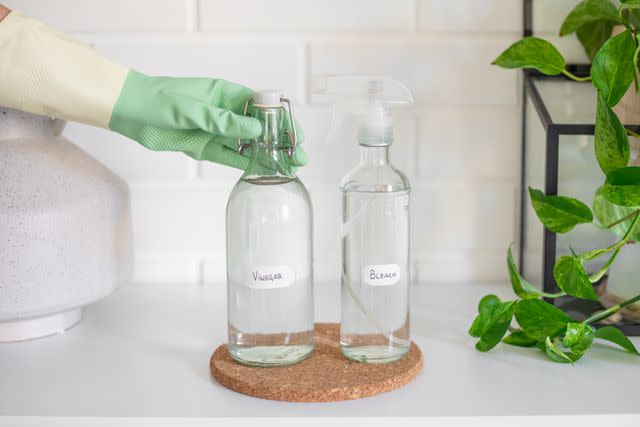
The Spruce / Sanja Kostic
Bleach and vinegar might be two of the most popular and effective cleaning ingredients you can have in your arsenal, but just make sure you never use them together.
“Mixing bleach with vinegar produces chlorine gas because of the oxidative and acidic properties of the mixed chemicals,” Silva-Nash says. It can cause chemical burns and becomes more harmful in greater concentrations.
Bleach with Ammonia
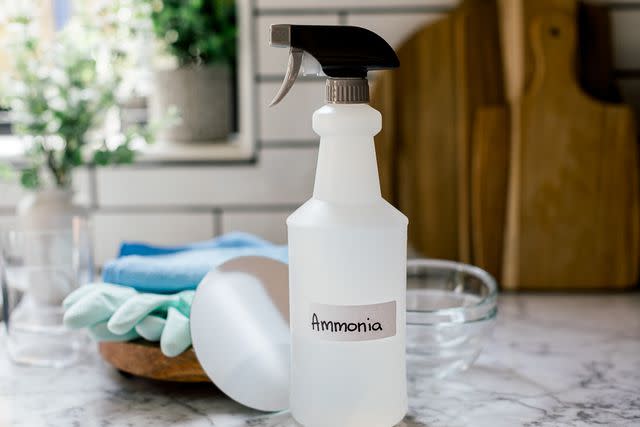
The Spruce / Ana Cadena
Using cleaning products that combine a number of ingredients poses its own threat as it can be more difficult to realize when there might be a chemical present that shouldn’t be mixed.
“Many cleaning products contain ammonia, which is why it is safest to just not mix bleach with any cleaning agent,” Silva-Nash says.
Hydrogen Peroxide and Vinegar
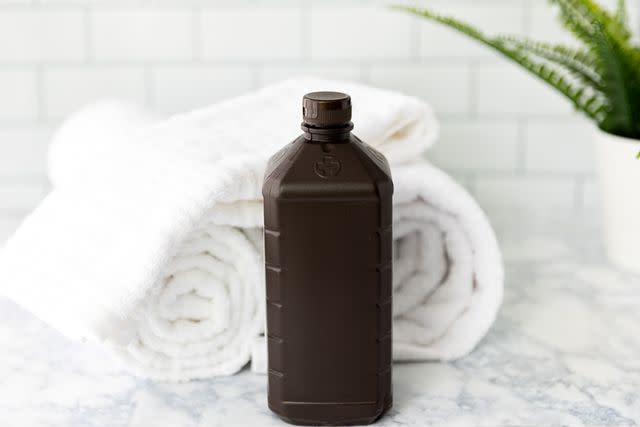
The Spruce / Ana Cadena
Peroxyacetic acid (PAA) results in the mixing of hydrogen peroxide and vinegar, Micetich says, and this can be quite harmful. “Stick to using hydrogen peroxide or vinegar on its own,” Micetich advises.
Vinegar and Baking Soda
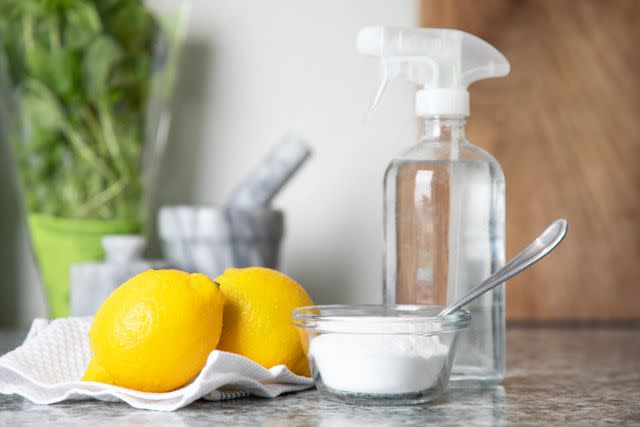
The Spruce / Cali Godley
While some of the ingredient duos on this list can be harmful when combined, this is one combination that simply loses its efficacy.
“Vinegar and baking soda aren’t dangerous when combined, but they aren’t very effective either,” Gagliardi says. “When mixed together, vinegar and baking soda neutralize each other and lose their cleaning properties.”
While they can both be effective cleaners in the appropriate circumstances, Gagliardi recommends simply using them separately.
Acidic Cleaners and Bleach
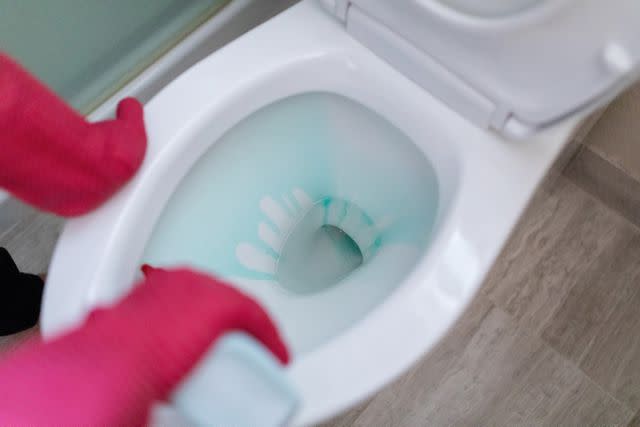
The Spruce / Taylor Nebrija
Acidic cleaners, such as rust removers and heavy-duty toilet bowl cleaners, and bleach can produce vapors that Gagliardi warns could be harmful. Keeping these cleaning products separate and never mixing them should mitigate concern and keep your breathing air safe.
Sodium Hypochlorite Bleach and Oxygen Bleach
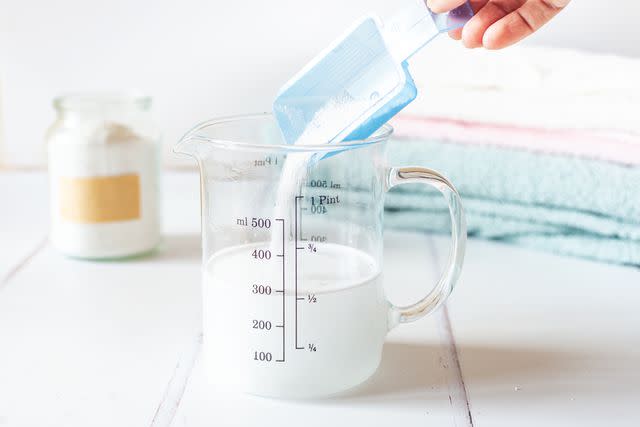
The Spruce / Ulyana Verbytska
Yet another ineffective duo, sodium hypochlorite bleach and oxygen bleach (also known as all-fabric bleach) are powerful stain fighters when they go it alone, but combine them and you might be less than thrilled with the results. The two bleach actives in the products, hypochlorite and peroxide, will cancel each other out, says Gagliardi. Instead, stick with one or the other.
Read Next: How to Clean Every Part of Your Home With Vinegar
Read the original article on The Spruce.

